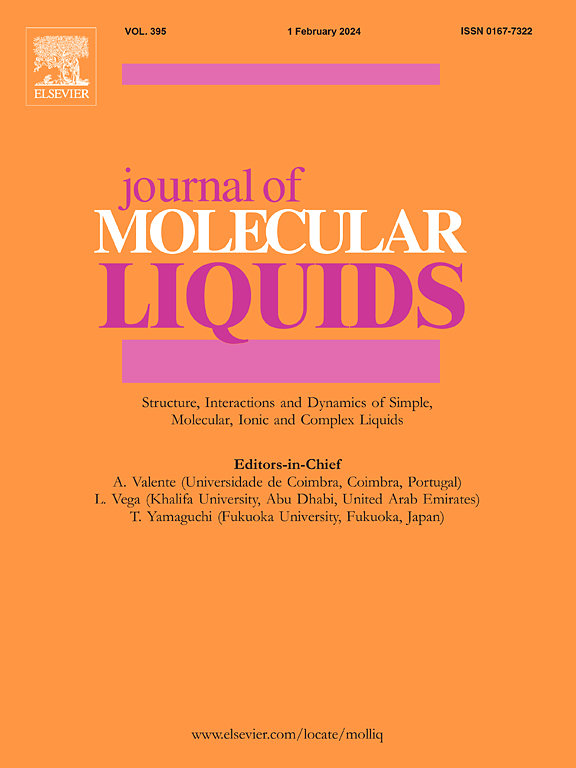Shear thickening fluid: A multifaceted rheological modeling integrating phenomenology and machine learning approach
IF 5.3
2区 化学
Q2 CHEMISTRY, PHYSICAL
引用次数: 0
Abstract
Amorphous silica and polyethylene glycol (PEG)-based shear thickening fluid (STF) having 30 % (w/w) was synthesized. The complex viscosity pattern for PEG-silica STF examined at varying temperatures (25–50 °C) and shear rates (1–1000 1/s). It was predicted using Galindo-Rosales technique-based phenomenological model that utilizes piecewise functions to predict viscosity in different shear rate zones. Moreover, machine learning (ML) based models namely, support vector regression (SVR) and artificial neural networks (ANNs), were developed to forecast the nonlinear nature of the viscosity of STF as a function of temperature and shear rates. The phenomenological model performs well during training (R2 > 0.99) but has low prediction the for unknown test data (R2 > 0.90), i.e. it overfits the data. Additionally, for phenomenological modeling, too many parameters need to be evaluated using complex equations based on iterative calculations, whereas ML based models are more accurate, quick, and generalized for both training and testing regimes for all zones. The ML models projected outstanding match between the predicted and experimental viscosities. For every zone, the present study concludes that the ML approach, with its better generalization outcomes, is a robust technique to estimate the rheology of STF. As a result, viscosity behaviour prediction by ML could assist in designing custom fluid formulations with desired viscosity properties for specific applications in varied environmental conditions.

求助全文
约1分钟内获得全文
求助全文
来源期刊

Journal of Molecular Liquids
化学-物理:原子、分子和化学物理
CiteScore
10.30
自引率
16.70%
发文量
2597
审稿时长
78 days
期刊介绍:
The journal includes papers in the following areas:
– Simple organic liquids and mixtures
– Ionic liquids
– Surfactant solutions (including micelles and vesicles) and liquid interfaces
– Colloidal solutions and nanoparticles
– Thermotropic and lyotropic liquid crystals
– Ferrofluids
– Water, aqueous solutions and other hydrogen-bonded liquids
– Lubricants, polymer solutions and melts
– Molten metals and salts
– Phase transitions and critical phenomena in liquids and confined fluids
– Self assembly in complex liquids.– Biomolecules in solution
The emphasis is on the molecular (or microscopic) understanding of particular liquids or liquid systems, especially concerning structure, dynamics and intermolecular forces. The experimental techniques used may include:
– Conventional spectroscopy (mid-IR and far-IR, Raman, NMR, etc.)
– Non-linear optics and time resolved spectroscopy (psec, fsec, asec, ISRS, etc.)
– Light scattering (Rayleigh, Brillouin, PCS, etc.)
– Dielectric relaxation
– X-ray and neutron scattering and diffraction.
Experimental studies, computer simulations (MD or MC) and analytical theory will be considered for publication; papers just reporting experimental results that do not contribute to the understanding of the fundamentals of molecular and ionic liquids will not be accepted. Only papers of a non-routine nature and advancing the field will be considered for publication.
 求助内容:
求助内容: 应助结果提醒方式:
应助结果提醒方式:


